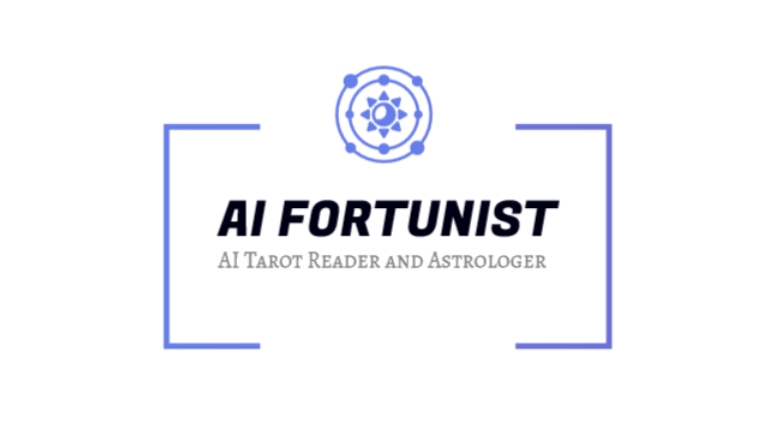[ad_1]
A History of the Pharmgen Research Corporation
A Fanfic Hypothetical
by The Preve
Based upon art and concepts by Synthean
The Author wishes to convey his thanks to Synthean for his permission in writing this hypothetical history.
Part One: June 1901-February 1944
June 15, 1901- Anton Höss (April 12, 1873-July 16, 1938) arrives at Ellis Island, New York. Born in Swansberg, Bavaria to Wilhelm Höss, a storekeeper, and Marta Höss (nee’ Strauss), daughter of a barrister, Anton would acquire his Love for nature from childhood explorations of the nearby forest. A young adulthood of work on local farms also instilled a fascination with the natural functions of plants and animals.
A brilliant student, Anton’s excellent academics would attract notice from educators, and gain him a scholarship to Friedrich Wilhelm University, Berlin (now Humboldt University), where he double majored in Medical Science and Biology, with a minor in Botanical Science.
Of particular interest to Anton are the works of Gregor Mendel and the emerging science of genetics. A double major and minor at one of the most prestigious and advanced universities in Europe is a crushing academic burden for most, but Anton’s photographic memory, energy, drive, and obsession help him considerably.
Anton’s obsession is with the idea of creating new forms of life through selective breeding and hybridization. His wish to play God stems from a deep, hidden, and unacknowledged anger towards said deity which, had Anton the chance to encounter a certain Austrian Jew, whose newly invented science of psychoanalysis was gaining traction at the time, would be exposed as a deep rooted hatred against his parents and village priest.
Wilhelm’s cold abusiveness, Marta’s Lutheran fanaticism, and Pastor Zeck’s improprieties (among other things) likely had something to do with it. His parent’s didn’t believe Anton of course, and dragged him to the church to personally apologize for spreading falsehoods and slander. Anton was twelve; the betrayal stuck.
Between 1895-1898, Anton gains PhD’s in Cellular Genetics and Comparative Biology, plus a M.Sc in Agricultural Science.
While some regard Anton as a brilliant young scholar, and scientist of great promise, his radical, far ahead-of-their-time, ideas on gene manipulation encounter resistance and derision from others. The less than enthusiastic response from the conservative German scientific establishment greatly influences Höss’ decision to emigrate. The burgeoning agricultural powerhouse of the American Midwest offers Höss an excellent venue to test out his theories.
September 4, 1901- Anton Höss takes a position as Associate Professor of Agricultural Science at the University of Iowa. It’s mostly to aid him in improving his English, but also to acquire a laboratory to test out his theories.
One lab assistant will have a significant impact on his life: Samantha Teague.
Samantha Phrynne Höss (nee’ Teague, August 12, 1880-September 15, 1965) was born in Wilmington, Iowa to James and Elizabeth Teague, a Scots-Irish couple originally from West Virginia. The second of two children born to the couple, Samantha is a woman of modest background but enormous ambition.
Highly intelligent, with a gift for plants, her talents got her a scholarship to the university, where she excelled at Botanical Science. Her gifts attract Anton Höss, drawn in as well by her unique looks and ahead-of-her-time sexual beliefs.
Samantha is, if not a classic beauty, certainly attractive, with dark, reddish-brown hair, and a full-figured body that exudes an earthy sensuality.
Samantha, on the other hand, finds in Anton a moderately handsome man who, while a little dull, has brilliant theories and, unlike most of her male colleagues including her father, a respect for her intellect and ideas.
The relationship between the two progresses in quick succession, from professor/assistant to collaborators to lovers to, on July 7, 1905, husband and Wife.
Anton’s marriage also draws in a third player: Henry Teague, Samantha’s brother.
Henry Bartholomew Teague (September 22, 1875-April 2, 1956) misspent a considerable part of his youth on confidence games. In short, a petty thief, a charlatan, a man of low character and, most especially, an embarrassment to his younger Sister.
Conversely, Samantha was close to her brother, in spite her exasperation, even exercising a maternal protectiveness towards him. Henry Teague’s con artist instincts stemmed from a gift for close observation, a visionary ability to sense people’s needs, and a distinct nose for opportunity. Add to it the gift of gab, and the result is a brilliant talent for salesmanship. That the products he sells are so much pixie dust and snake oil, sold at a profit, testify to his skills.
Henry is well aware of his Sister‘s gifts, but hasn’t quite figured out ways to exploit them. Her marriage to a brilliant German scientist, with unorthodox but fascinating ideas, sends Henry’s scheming mind into a storm of plotting.
“It was fairly obvious to Nan, great-uncle Henry was up to something when he approached her about starting a business venture. Henry always underestimated Nan. He mistook her maternalism for naivete’ but Nan was merely containing his damage. She shared one thing with her brother, however. She too recognized the business potential in Opa’s ideas, not as opportunity for more snake oil. Nan was also smart enough to recognize Henry’s gab could translate well into salesmanship, but never forgot he was a slick huckster. She kept a close eye on him.” Helen Höss Morressy (January 14, 1946-June 7, 1981), from the unpublished biography Nan Sam by H. H. Morressy.
October 12, 1906- Anton and Samantha Höss patent the Höss tetratriticale wheat strain. Hardy, with great flour potential, it dramatically increases wheat production in the Midwest.
January 4, 1907- Anton Höss submits the patent for the Höss hybridization process. A process for producing new strains of edible grains, wheat, corn, oats, and barley, able to grow in the toughest soils.
February 18, 1907- Anton and Samantha Höss, and Henry Teague found the Höss and Teague Agricultural Supply Company. Based in Des Moines it supplies hybridized seeds to farms and gardens across the Midwest. With Henry Teague as marketing CEO, Samantha Höss as Chairwoman of the Board, and Anton as head of Research and Development, Hoss-Teague grows to dominate the agricultural supply business in the Midwest.
“I think Uncle Henry surprised himself at how good he was at salesmanship. He surprised everyone else too. And I believe he honestly felt good the products he promoted actually worked. Vater, on the other hand, was much more interested in his scientific research than running the company. He left that task to Mother, and she was highly organized. She knew how to exploit people’s talents to their best advantage. Uncle Henry was smart enough to know he could never run the company like Mother, and she knew to keep him in check while exploiting his salesmanship to its fullest.” Erich Höss (interview conducted April, 4 1970).
February 4, 1910- Erich Gunter Höss (died March 6, 1995) is born.
April 10, 1910- Hiro Miyazaki is born.
June 2, 1910- Armond Elazar Stein (December 6, 1875-August 30, 1968) establishes A.E.S Pharmaceuticals in Chicago, Illinois
Born and raised in Prague, Bohemia to German-speaking Jews, A.E. Stein emigrates to America in 1900, specifically to start a business. A holder of medical and chemistry PhD’s from Friedrich Wilhelm, he uses his vast knowledge and drive to found one of the most successful pharmaceutical companies in North America.
April 4, 1912- Anton Höss creates Höss-Teague Laboratories, a research and development branch of the company, with its focus on hybridization, and the creation of newer, more productive strains of cereals and other plants. Young, talented scientists, some fresh out of college, are recruited from across North America and around the world. Fresh, new ideas enter the company, along with an ease on Anton’s work burden.
The laboratories are noted for their state-of-the-art equipment, facilities, and Free-wheeling atmosphere, which encourages the expression and development of cutting edge ideas. Anton also engages botanist, chemist, and inventor George Washington Carver as a consultant, to Henry Teague’s disapproval.
September 1912- Anton and Samantha co-author an essay, published in major North American newspapers, including the New York Times, advocating for eugenics, forced sterilization of undesirables, the “feeble-minded”, targeted minorities, and those considered of low intelligence, and for the possibility of improving the health and intelligence of the human race through selective breeding.
Anton and Samantha would consult with and join the boards of many eugenics programs across North America and Europe.
April 1912- At the urging of their young researchers, Höss-Teague Laboratories purchases two herds of dairy cows, and three drifts of pigs from several Wisconsin farmers, beginning the era of animal and genetic research for the company.
January 12, 1913- Samantha Höss gives birth to twins Michel (Michael) Albert Höss (died October 4, 2002) and Rebecca Elisabeth Höss (died May 25, 1938? Missing and presumed dead).
July 28, 1914- The Great War begins.
December 8, 1914- Anton Höss, after some hesitation, contacts the British consulate with an offer to supply grain and other agricultural products to Britain’s war effort. The British, initially reluctant due to Höss’ German origins, accept and also refer him to the French. The greatly expanded customer base brings huge profits to the company. It also serves as the catalyst for the company to expand into the development of organic and plant based explosives.
By 1917 Höss-Teague Agricultural is a major supplier of food, ethanol, and nitroglycerin to all the major Allies, reaping enormous profits. Höss’ decision to support the Entente, in spite his German origins, can be attributed to his resentment at his poor treatment from Germany’s scientific community prior to his emigration. Lingering hatred for his parents and former church is also a factor.
Anton’s public pledge of allegiance to the U.S government, his swearing into U.S citizenship, accompanying pledge of his and the company’s services to the U.S war effort, before a crowd of reporters on May 7, 1917, serve to mitigate some suspicions of his German background and begin, what will evolve into, a long-standing relationship with the U.S government.
March 16, 1916- George Washington Carver resigns as consultant to Höss-Teague Laboratories in protest of Höss’ shift to explosives production. Rumors of Carver’s uneasiness with the direction of H-T Laboratories, and the increasingly radical nature of the research conducted, lingers for decades. Such speculation is generally scoffed, particularly by Carver himself.
November 11, 1918- The Great War ends.
January 1919- H-T Agricultural is the dominant agricultural supply company in North America. The Höss family number among the wealthiest, most powerful families in the United States. As the Twenties progress, the company will continue to expand, and the Höss family will grow ever wealthier.
24 June 1920- AES Pharmaceuticals, flush from huge profits supplying medicine to the Allies during The Great War, and later during the Spanish Flu pandemic, begins human trials for a new pharmaceutical product, Codaprine. Meant as a pain reliever, its role as a cause of birth defects is covered up for decades, by company execs.
The Roaring Twenties are a happy time for the Höss family and Henry Teague, as well for the company. H-T Laboratories becomes a mecca for the most brilliant, ambitious, and cutting edge young scientists. Höss-Teague Agricultural expands across North America and around the world, establishing subsidiaries in Europe and Japan.
Samantha persuades her husband to establish a laboratory in Berlin, in 1925. He does so with considerable reluctance, but soon becomes intrigued by a rising young politician and activist, the radical group he leads, and a best selling book he publishes, with ideas the Höss family find very appealing.
1920-1930- AES Pharmaceuticals also expands, becoming one of the largest companies in North America. Its products are found in pharmacies and doctor’s offices across Canada, the United States, and Mexico. After expanding into Europe, it becomes Bayer’s most formidable rival.
1927- Erich Höss enters Yale. He majors in Business Law and minors in Political Science. In short order he joins the Skull and Bones Society, and establishes connections with the Mystic Order of the Outer Dark, a Miskatonic University based occult club which worships mysterious entities known as the Great Old Ones.
–Hiro Miyazaki enters Tokyo University to study medicine.
October 29, 1929- The Crash of the Stock Market. Höss-Teague and AES are greatly impacted (October 24-29).
Several subsidiaries of both companies are closed. Massive layoffs are implemented. Recovery for Höss-Teague Corporation, renamed from Agricultural Supply in 1930, begins due to increasing involvement with the new German government, elected in 1932. The Höss family establishes close friendships with leading figures in the Nazi Party.
The new German chancellor, appointed in 1933, is intrigued by Anton and Samantha’s views on eugenics, and the couple establishes a strong relationship with him.
Anton gives serious consideration to a move back to Germany but is dissuaded by Samantha. The couple do spend extended vacations in Germany throughout the 1930s however. A summer mansion is built in the Bavarian Alps.
1930- Michael and Rebecca Höss enter Miskatonic University to study Archaeology and Psychology respectively. On Erich’s suggestion, Rebecca joins the Mystic Order.
In 1932 Michael and Rebecca first meet Wilhelm Reich at a guest lecture. His theories fascinate Rebecca, who finds the idea of a machine to harness Orgonic energy intriguing. The possible uses of such a machine to advance the Order’s aims is noted in her recovered diary.
1931- Hiro Miyazaki enters Yale School of Medicine to complete graduate work. He briefly rooms with Erich Höss.
1931- Erich Höss graduates from Yale with a bachelor’s degree in business law. In September he enters Harvard Law as a graduate student.
May 1933- Hiro Miyazaki completes graduate work. In August he accepts an offer from Thomas Hunt Morgan to research genetics at Caltech. At the university Miyazaki is introduced to the concept of chromosomal crossover, or “crossing over.” The idea, as noted in his diary, “Excited my mind as of a child discovering a new toy.”
Morgan is very impressed with this gifted young student from Japan, but confides privately to a colleague his distress at some of Miyazaki’s ideas; included are ideas on hybridization and the possible use of humans in medical research.
September 1933- Erich Höss is accepted into the law firm of Donovan, Leisure, Newton, and Irvine on the recommendation of partner, and old family friend, William “Wild Bill” Donovan. His skills as a lawyer and organizer greatly impress Donovan and the others.
May 1934- Michael and Rebecca graduate from Miskatonic University.
September 1934- Michael Höss enters Oxford for graduate studies in archaeology. From 1934 to 1940 he will engage in extensive expeditions to obscure sites around the world, making detailed observations of local cultures; a trait which will have significance in the future. Rumors of his actions during the disastrous Victoria Land Antarctica expedition of 1937, and his possible involvement in the deaths of several expedition members, persist and taint his reputation for decades.
Accompanying rumors, concerning the discovery of mysterious ruins and artifacts in the Queen Maud mountains, are dismissed as hokum. A subsequent German expedition to investigate results in the disappearance of the entire party, among them Helga von Donnenberg, famous explorer and archaeologist, considered Germany’s Amelia Earhart.
The unsolved disappearance is considered a national tragedy. Among the guests at the memorial are Adolf Hitler, Heinrich Himmler (who’d financed the expedition), the von Donnenberg family, and Anton, Samantha, and Rebecca Höss, friends of the family since 1925.
–Rebecca Höss enters the German University of Würzburg to further her studies in Psychology. She is able, through her parents, to contact the von Donnenbergs who graciously allow her to stay at the family estate.
Years later, a scandalous tell all is published anonymously in Germany, alleging sexual improprieties among family members; included are Incest, bestiality, and sadomasochistic activities involving Helga von Donnenberg and an unnamed young woman referred to simply as “Die Amerikanisch Fraulein.” The book raises eyebrows and become cause for a successful defamation suit against the publisher.
There is little sympathy for the family among some, given their close associations with the Nazis. They were among the few aristocrats allowed to keep positions in the Wehrmacht and SS after the July Plot. Those with sharp memory did note Rebecca’s intense distress at the memorial service.
April 1935- Hiro Miyazaki accepts an offer of a commission in the Imperial Japanese Army. He is commissioned a lieutenant and, after a period of (intensely brutal) training, assigned to the Epidemic Prevention and Water Purification Department of the Kwantung Army. Two months later he is placed in a department section known as Unit 731.
In 1936, Hiro will be placed in a subsection known as 731 Black. While it’s existence, subsequently, is strongly denied by both the American and Japanese governments, interviews with alleged survivors, officers, and government officials postwar, indicate Black Section was reserved for doctors and scientists who displayed the highest intelligence, most radical theories, the most intense devotion to the Emperor, and greatest “enthusiasm” for the methods of research.
Lieutenant, later Captain, Miyazaki’s rumored activities during the infamous Rape of Nanking (December 1937-January 1938) are alleged to be the explanation for his appointment as head of Black Section in 1939.
June 1937- Rebecca Höss returns to Miskatonic University to continue research into Orgonic energy (and parallel research with the Mystic Order).
September 1937- Erich Höss marries Katherine Westonhall (August 14, 1912-June 4, 1956) of the Boston Westonhalls, who trace their ancestry to the Mayflower, and were among the prominent families of the Gilded Age. The union of two wealthy and powerful American families is well-covered in the media and social register.
[ad_2]






